Topical
Below are a few references to my research organized by category. A complete PDF form of my CV, with all references, is available here. Topics include scientific computing, entry vehicles, orbital trajectory design, aeronautics, miscellaneous GNC, and biomedical.
Scientific Computing
Among other activities before graduate school, I built websites and preferred to use Django. From the Django community and a brief period I spent at a financial software company where I learned about relational databases, I developed strong sense of software interface design principles. Combining these principles with burgeoning mathematical sensibilities, I developed software librareis like SimuPy and ndsplines, which were used substantially for R&D efforts for entry vehicle analysis and design. I presented SimuPy at SciPy 2018; I also like to publish in (and review for) the Journal of Open Source Softare.
More recently, I developed Condor, a mathematical modeling framework for engineers. This software uses the meta-programming I learned from Django to create a blackboard-like coding environment so engineers could easily define mathematical models and deploy the best solvers to reduce the software development effort required to perform analysis and design. Condor has been used substantially in both aeronautics and orbital trajectory design. Based on the impact Condor has had on NASA's mission, it was selected as the 2025 NASA Software of the Year (first co-winner).
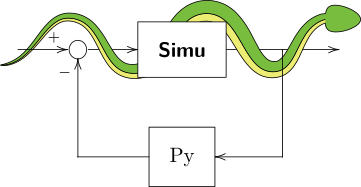
The logo for SimuPy. To learn more, watch the SciPy 2018 talk, but lately I do most of my work in Condor.
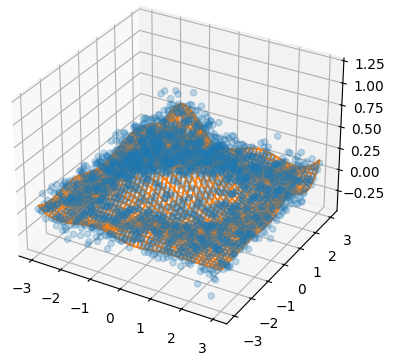
visual representation for 2D least-square fitting of a spline to noisy data using ndsplines
Entry Vehicle Simulation and Design
Atmospheric entry vehicles (any vehicles that enter an atmosphere from beyond the atmosphere, such as missions to deliver payloads from orbit or for inter-planetary exploration) have prompted advancements in both physical and guidance, navigation, and control systems. As part of my MS thesis and PhD dissertation, I studied nonlinear tracking controllers for aerocapture, a propellant-efficient mission concept for entering orbit around another celestial body. As a NASA Pathway's student, I made critical contributions in simulation development, aerodynamic data processing, and control system design. These were described in a number of NASA publications for the Pterodactyl project. I led the intillectual property (IP) development efforts based on a novel control architecture I proposed to leverage dihedral instability to achieve rapid maneuverability, which resulted in a patent being awarded.
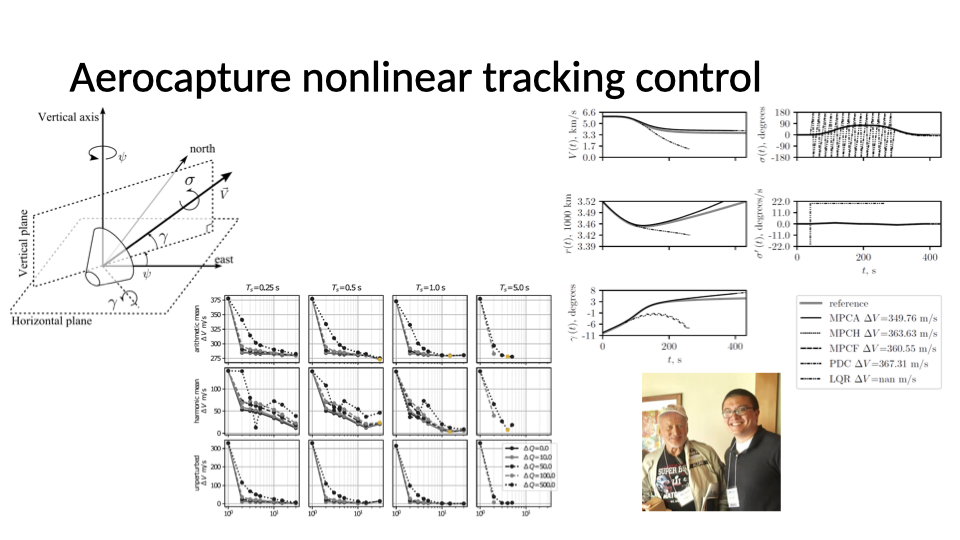

Orbital Trajectory Design
In 2021, I derived a variational derivative for trajectory analysis outputs with respect to static analysis, originally to support the analysis and design of aircraft. The theory of this "sweeping gradient method" (SGM) and applications to canonical control problems were published in The Journal of Optimization Theory and Applications. During a detail on the Orion flight software development team, I realized this approach might be applicable to orbital trajectory design. In collaboration with Dr. David Woffidnen at Johnson Space Center in Houston, I applied SGM to models of orbital rendezvous with uncertainty to develop novel trajectory design capability which has been applied to phases of the Artemis missions.
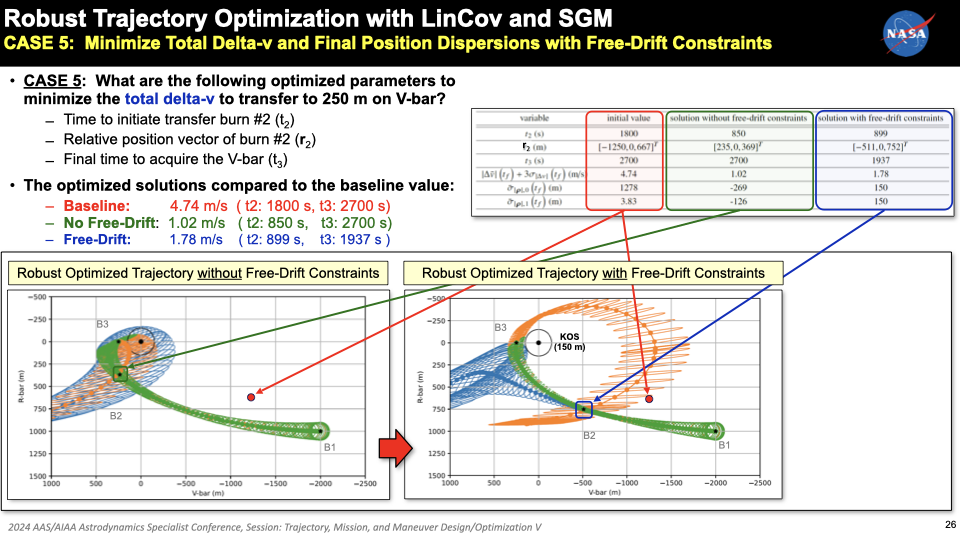
This slide shows the ability to design trajectories with safety constraints on the dispersed positions (99% probability position elipses shown) to maintain distance from the target in the event of engine failure after the first maneuver (blue) or second maneuver (orange) and is propellant optimal if the engines do not fail (green).
Hybrid-Electric Technology for Aviation
From 2021 to 2025, I supported the development of analysis and design capability for hybrid-electric technology for aircraft propulsion systems. This required developing several novel capabilities:
Flexible aircraft modeling tools that can handle arbitrary configurations such as hybrid fuel systems, validated for conventional aircraft against heritage tools
Automatic model calibration from published data
Speed/Torque operating line design using optimization of propulsion system model
Fuel and battery allocation for vehicle closure with in-the-loop thrust split optimization during cruise
Model generation for studying the impact of new aircraft concepts on the national airspace
Medical Devices
Before embarking on my research career studying GNC systems, I was interested in biomedical research and development. As part of my undergraduate engineering "Clinic" experience, I worked on two medical device projects. As a junior, I proposed, prototyped, and tested a bandage technology that did not require external pressure; this technology was patented and commercialized under RevMedX. As a senior, I co-led a team that designed and prototyped a device to allow simultaneous diffuse optical spectroscopy and optical coherence tomography in contact with a subject's skin.
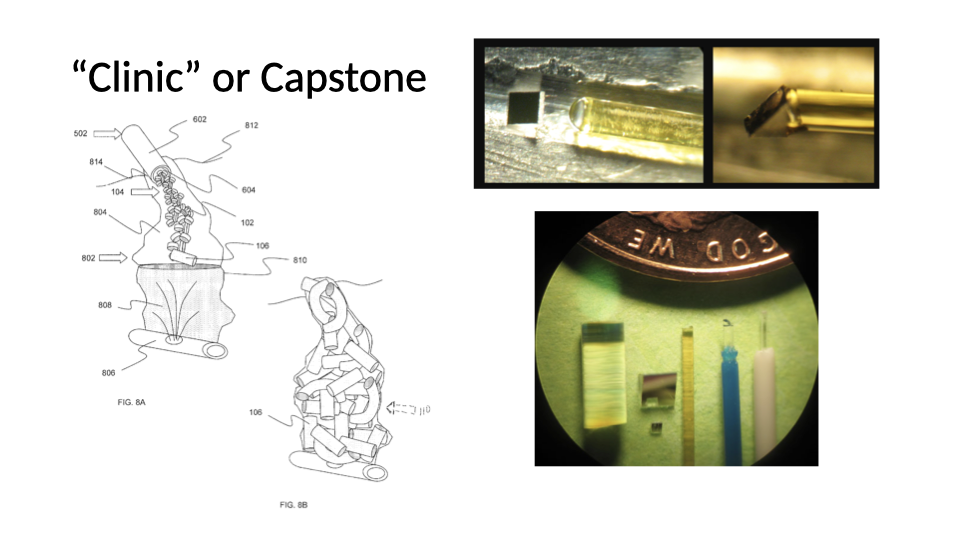
On the left are two figures from the bandage patent of my junior year project; On the right are photos of the optical components from my senior year project
This experience with medical optics prepared me to co-found a retinal laser technology startup, where I performed simulations for biological tissue modeling, strategized IP portfolio development, performed basic engineering prototyping and design, and reviewed vendor engineering status.
Although I eventually returned to studying GNC systems, I also spent the first few quarters of my PhD at Davis studying actuated prosthetics. One day I hope to revisit my interst in biomechanics and biological/neural control.